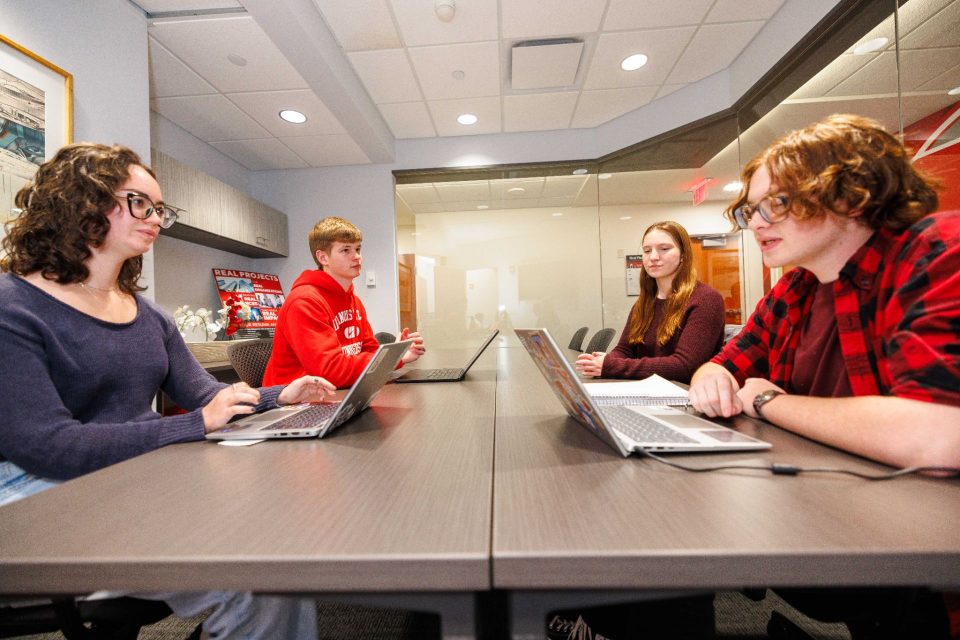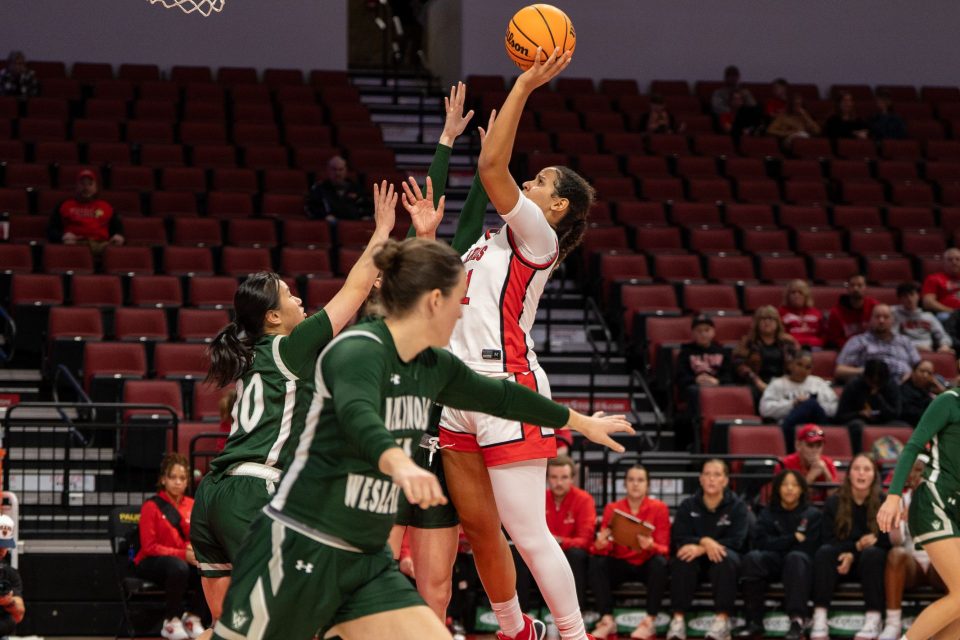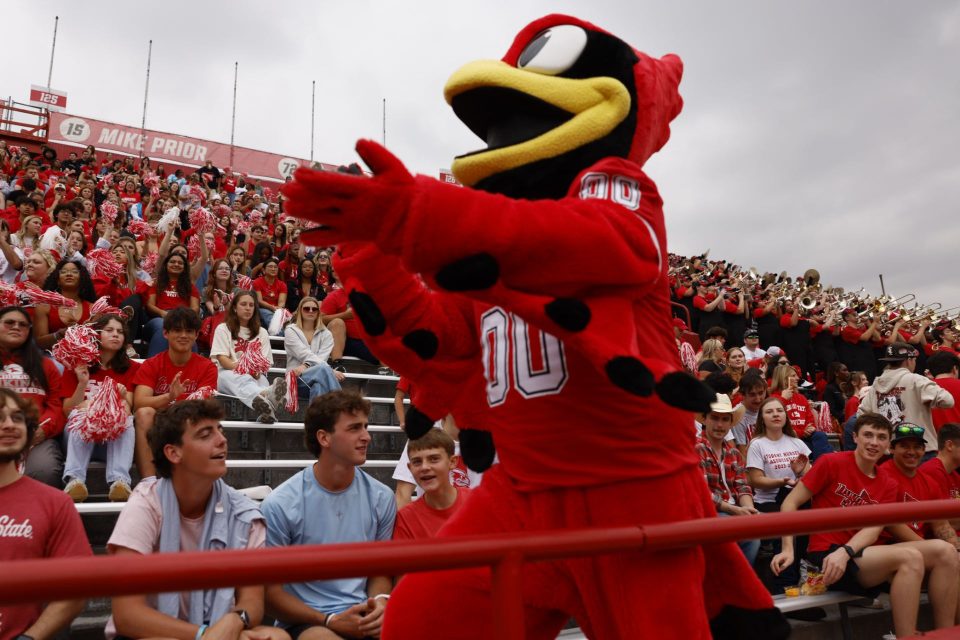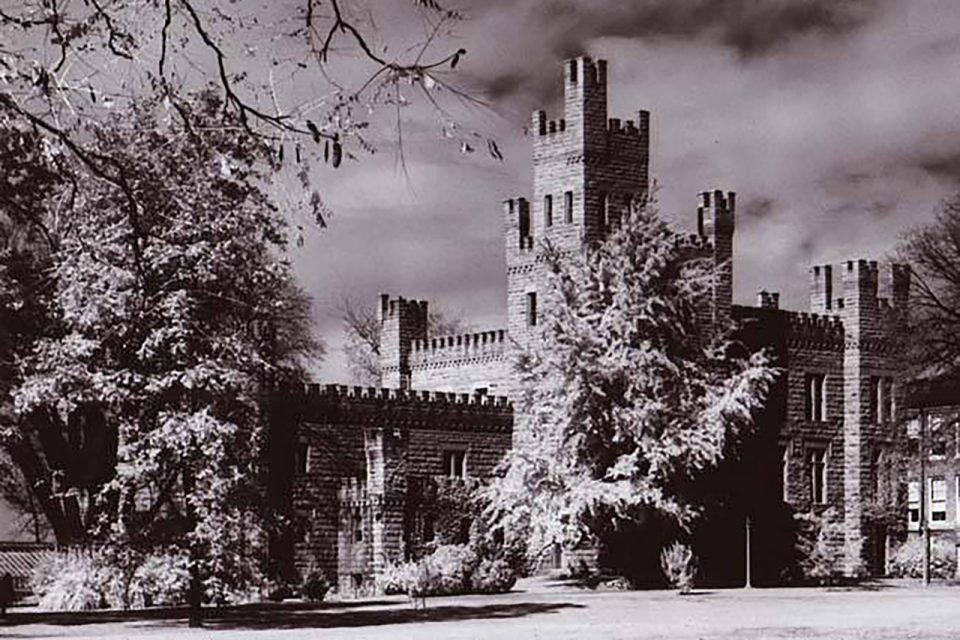This month in Illinois State University history: January
From playing for a national football championship to remembering a beloved campus collie, historian Tom Emery explores this month in Illinois State University history.
January 10

On this date in 2015, the Illinois State football team played in the Football Championship Subdivision (FCS) national title game, losing in the last minute to powerhouse North Dakota State, 29-27.
Following a 5-6 campaign the previous season, Illinois State charged out of the gate in 2014 with a high-powered offense led by quarterback Tre Roberson and tight end James O’Shaughnessy. The Redbirds also could rely on a formidable defense.
The Redbirds beat three ranked teams on the way to a 7-0 record and a No. 7 national ranking before falling, 42-28, at No. 22 Northern Iowa for the only loss of the regular season. In all, Illinois State beat seven ranked teams in 2014 and shared the Missouri Valley Football Conference title with North Dakota State for the first of two straight years. The two teams, however, did not meet in the regular season in 2014.
Illinois State received a first-round playoff bye before rolling over Northern Iowa, 41-21, in a rematch, this time at Hancock Stadium, in the second round. A thrilling 59-46 win at Eastern Washington followed before a nail-biting 21-18 victory at top-ranked New Hampshire in the semifinals.
The title game was played in Frisco, Texas, in front of a national audience on ESPN2. The Redbirds were 6.5-point underdogs in the game against North Dakota State, the three-time defending national champions. But Illinois State never played like it, rallying from a 23-14 deficit to take a 27-23 lead with 1:38 left on a career-long 58-yard touchdown run from Roberson.
However, NDSU star quarterback Carson Wentz, who was later the No. 2 overall pick in the 2016 NFL Draft and is currently the backup quarterback for the Kansas City Chiefs, scored from five yards out with 37 seconds remaining to give the Bison a 29-27 lead. The Redbirds were intercepted on their final desperation drive.
With a 13-2 final record, Illinois State set a school mark for victories. O’Shaughnessy was a fifth-round draft pick of Kansas City in 2015 and spent seven years in the NFL, with 40 starts. Roberson is now a defensive back for Calgary in the Canadian Football League.
The Missouri Valley Football Conference is no stranger to the national stage. The conference has placed at least one team in the FCS title game for the past 14 seasons. The matchup between ISU and North Dakota State is one of three times since 2014 that the national title game has been an all-Missouri Valley affair.
January 11
On this date in 1989, the Illinois State men’s basketball team edged Chicago State 71-70 in the first home game at Redbird Arena (now CEFCU Arena).
The game marked a new era for both the Illinois State basketball programs as well as the Bloomington-Normal community. As the Bloomington Pantagraph editorialized on the morning of the debut, “it is more than a basketball game; the opening of the arena is an event symbolizing the community.”
In front of a then-record crowd of 9,724, guard Randy Blair scored the first basket in the arena’s history, a 5-footer along the baseline 35 seconds into the game. Illinois State led 36-24 at halftime and was ahead, 50-29, with 13:12 remaining before Chicago State began to come back.
Jarrod Coleman tossed in 17 points and pulled down 13 rebounds for Illinois State, while Scott Fowler, a freshman, finished with 16 points.
The arena received overwhelmingly positive reviews from fans, who variously described the building to the Pantagraph as “absolutely gorgeous,” “fabulous,” “a great place for the team to win,” and “a benefit to all the fans in general.”
Then-ISU head coach Bob Donewald said “it’s hard to put into words exactly how I feel … being able to lead the team out to play in such a magnificent structure was a great moment for me.” He expressed gratitude for the “magnificent effort on a lot of people’s part to open” the arena, which he called “as fine a basketball facility as there is in the country.”
CEFCU Arena serves as the home of both the ISU men’s and women’s basketball teams, as well as Redbird volleyball. Thanks to its on-court success and excellent game-day atmosphere, the ISU volleyball program has routinely ranked among national leaders in attendance.
The first women’s basketball home game at the arena was eight days after the men’s opener, on January 19, 1989, against Western Illinois. Illinois State raced to a 45-17 halftime lead in an 89-51 blowout. Five Redbirds scored in double figures as Illinois State shot 50% from the floor while holding Western Illinois to just 29.4%. The Redbirds held a 50-36 advantage in rebounding.
On February 3, 2007, the court at CEFCU Arena was named in honor of Doug Collins, the ISU star from 1970-73 who later enjoyed success as both an NBA player and coach.
January 15

On this date in 1929, Dr. Martin Luther King Jr. was born. Throughout the 1960s, news of King’s fight for justice was frequently found in the pages of the Vidette and was a topic of discussion across the Illinois State campus.
King’s appearance at Illinois Wesleyan University in February 1966 was celebrated by students at both ISU and IWU, as well as the Bloomington-Normal community. Ironically, King was one of 13 candidates in a mock student election at Illinois State in the spring of 1968. News of the election was carried in the Vidette on March 28, seven days before his assassination. The “election” had been scheduled for April 24.
His murder in Memphis on April 4, 1968, was eulogized in poignant words by one writer in the Vidette in the April 23 edition. “We knew he was destined for martyrdom,” wrote the columnist. “His comparison to Gandhi was all too obvious, and we have seen what happens in this country when someone tries to bring us up to the real events of our time – we have seen, for example, the murders of Abraham Lincoln and Jack Kennedy. But we had hoped [King] would be given a few more years…”
King’s legacy has been celebrated at Illinois State ever since. On April 17, 1969, just over a year after King’s death, civil rights leader Rev. Jesse Jackson was part of a public symposium on racism held at Capen Auditorium.
Jackson had been on the second-floor balcony at the Lorraine Motel in Memphis, just a few feet away when King was shot. He was one of an array of leaders who appeared at ISU during the symposium, which lasted 18 days.
The previous month, on March 18-19, Rev. Andrew Young, who had also accompanied King to the Lorraine Motel, visited Illinois State to discuss civil rights in the current society.
Members of the Illinois State community also expressed their thoughts on King’s tragedy in artistic ways. A poem in his memory appeared in the May 13, 1968 edition of the Vidette, while he was memorialized during an avant-garde jazz concert at ISU in April 1969.
On January 20, 1986, the United States celebrated Martin Luther King Jr. Day as an official holiday for the first time. One of the many notable exercises in the community was the annual memorial march in King’s honor, which was first held around 1980 and was sponsored by the NAACP. The march wound its way through Illinois State, Illinois Wesleyan, and the streets of Bloomington-Normal.
An editorial in the Vidette on Jan. 17, 1986, three days before the holiday, urged the ISU campus to “Remember Dr. King: Continue the Dream.”
Illinois State continues to organize an annual Dr. Martin Luther King Jr. Day of Service (scheduled for January 24, 2025, at Midwest Food Bank), and the University hosts the annual Martin Luther King Jr. Cultural Dinner (this year featuring speaker Baratunde Thurston on February 15, 2025).
January 16
On this date in 1924, the Vidette carried some sad news for Illinois State students: their beloved campus mascot, a collie named Wahoo, had died.
The loss ended a long friendship between Wahoo, who was named for one of the school’s early fight songs, and the student body. As the Vidette lamented, “Wahoo has been the ever-present friendly chaperone at the entrance to Fell Hall for four years.”
Wahoo, though, made his way across campus to fill a variety of roles, including as an unofficial greeter. The Vidette recalled that “much of his time has been spent … welcoming our new fellow students silently and often escorting them as far as (Old Main), where he would stand and shake his head and wonder how his newfound friend would like” Illinois State.
The four-legged friend was there for the entire campus careers of scores of students. The Vidette continued that “Wahoo has been with us quite long enough to have seen many hundreds of his friends obtain diplomas and degrees and leave the proud halls of (ISU) as students forever.”
Homecoming was a big deal for Wahoo, who was usually a featured attraction. On November 9, 1921, the Vidette reported that Wahoo was one of the first in line at the “big parade” onto the football field, following just behind the band. The paper proudly noted that Wahoo “marched on to the field…and was as much interested in the game as any spectator.”
He was certainly dressed for the part, “in his beautiful suit of red and white,” and “was the subject of snap shooters (photos) all day long.” The paper summarized that “many of his pictures were carried away for memory books. It’s a dog’s life, but he enjoys it.” Indeed, “Homecoming would not have been complete without Wahoo.”
Alumni and Homecoming visitors always looked for Wahoo for, wrote the Vidette, “they have learned that they can find their dog friend in one of three places; the south steps of ‘Old Main,’ at the Station Store, or under the mailbox in front of Fell Hall.”
Sadly, Wahoo was hit by a car near the main entrance of campus. With remorse evident, the Vidette eulogized that “there is an empty place waiting in silent remembrance at the three places before mentioned, which will never be quite natural without that old brown friend of ours, Wahoo.”
January 20
On this date in 1821, Samuel Moulton, the namesake of Moulton Hall on the Illinois State campus, was born.
Moulton is remembered as the state legislator who introduced the bill to found Illinois State Normal in 1857 and spent 19 years on the Illinois State Board of Education, which oversaw the University in its early days. From 1859-76, he served as the board’s president. The involvement reflects Moulton’s lifelong devotion to higher education.
A Massachusetts native, Moulton studied law in Illinois and settled in Shelbyville in 1849. There, he was a friendly rival to Abraham Lincoln and is one of numerous connections of ISU to the sixteenth president. Moulton was connected to Lincoln on 40 legal cases.
Politically, he was often on opposite sides with Lincoln. Despite their many differences, as President, Lincoln appointed Moulton as a district enrollment commissioner in the Civil War. Lincoln was clearly fond of Moulton, writing of “the feelings of personal respect and esteem, with which I have always regarded you.”
Moulton’s loyalty to Illinois State University is unquestioned. Along with President Charles Hovey, Moulton borrowed money at his own risk to fund the construction of “Old Main,” the first campus building.
Moulton, who served three terms in the U.S. House, died on June 3, 1905, and is buried in Shelbyville, where his Italianate mansion still stands on the south side of town. A street, a middle school, and a Methodist church are all named in his honor in Shelbyville.
Erected in 1920 and later re-named, Moulton Hall is the most visible legacy of the man who helped give birth to Illinois State.
Tom Emery is a freelance writer and historical researcher who, in collaboration with Carl Kasten ’66, co-authored the 2020 book Abraham Lincoln and the Heritage of Illinois State University.
Latest Campus News
- Innovation in action: Hagge Innovation Institute fosters real-world problem solvingDani Hartmann '24 and Luke Graf '21 are two of the hundreds of students who have developed their skills and boosted their resumes through the Hagge Innovation Institute, which celebrated its third anniversary this month.
- Young, gritty Redbird women’s basketball team begins the road to MarchWhen the Illinois State University women’s basketball team opens the regular season on Monday, November 3, at CEFCU Arena against Dayton, head coach Kristen Gillespie will be glad to have a couple of veteran players on the floor to lend their leadership to a young team.
- Five questions with Dr. Jeritt Williams, engineering technology prof who trains future experts in robotics and automationA three-time alum of Illinois State University, Dr. Jeritt Williams ’07, M.S. ’12, Ed.D. ’24, is the the 2025 Association for Advancing Automation Educator of the Year.
- Homecoming 2025 highlights: The photos, posts that raised the bannerRedbirds near and far returned to campus to Raise the Banner for Illinois State University’s Homecoming 2025. Check out this year’s roundup of some of the best posts and photos shared throughout #RedbirdHomecoming week.
- New engineering student is an award-winning inventor inspired by his own diabetic journeyStephen Reuter, an 18-year-old freshman general engineering student at Illinois State University, may be at the starting line of his training, but he understands more than most people the meaning of the old adage: “Necessity is the mother of invention.”
- This month in Illinois State University history: OctoberFrom an alum’s World Series victory to how Redbirds celebrated Halloween more than a hundred years ago, historian Tom Emery explores this month in Illinois State University history. October 15 Today is the final day of Latinx Heritage Month, a time to celebrate Latinx history, culture, and contributions. One of the leading Mexican actresses in

















